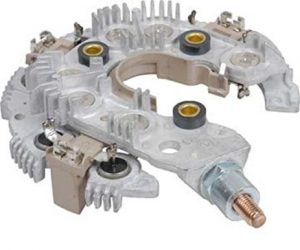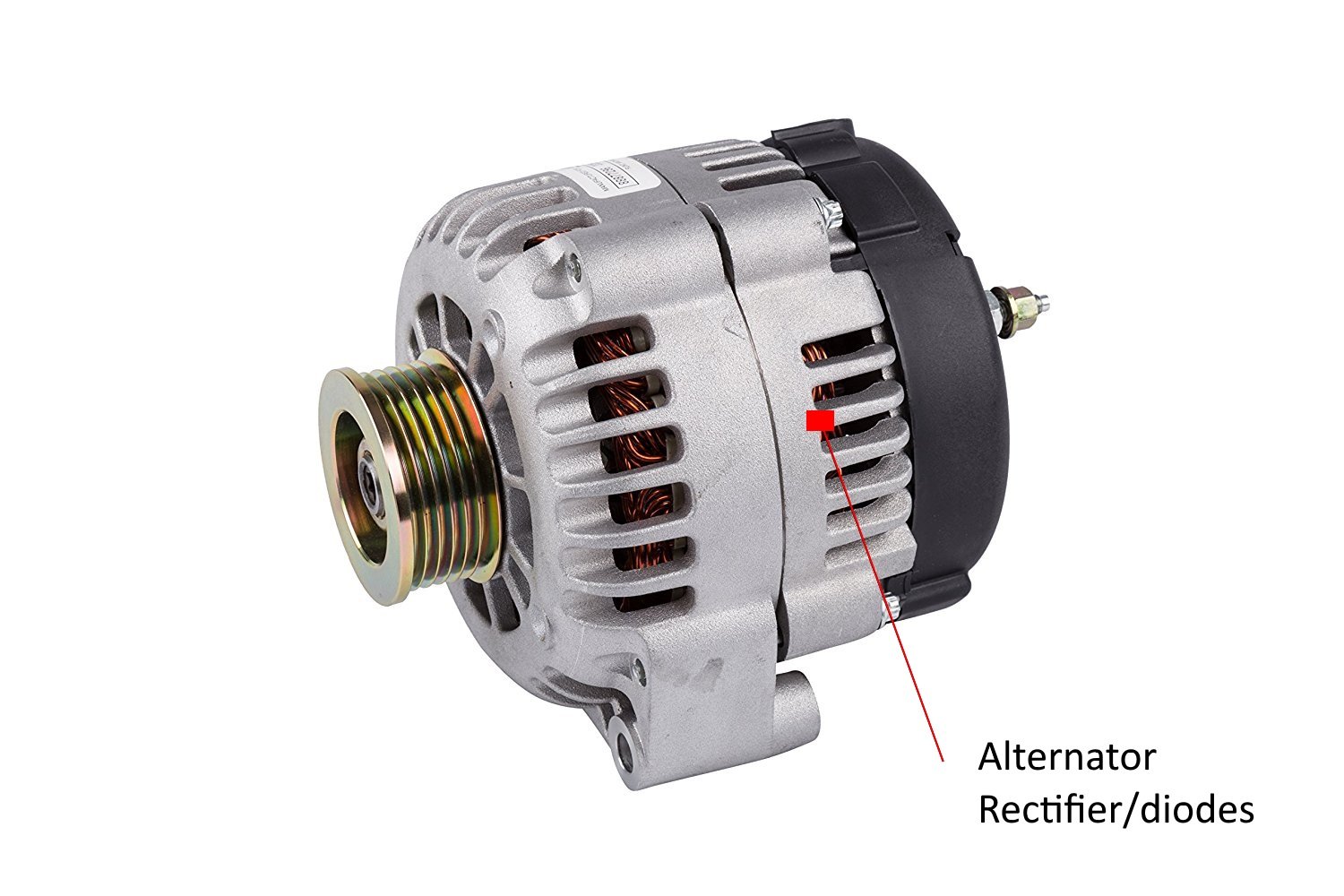So, What’s an Alternator Diode?

The alternator’s rectifier assembly
If you’ve ever broken down halfway down Peachgrove Road on a soggy Hamilton morning, you’ll know how important your charging system is. At the heart of it? The alternator, doing the big mahi to keep your car battery topped up so you can kick it into life outside The Base or in the Avalon suburbs. Inside that alternator are little bits called diodes — up to six of them. Think of them as the security guards making sure your battery only gets the right kind of power.
Alternator diodes are tucked away in the rectifier assembly. Their job is pretty simple: they take the AC power your alternator produces and flip it to DC power, which is what your battery and everything else in your Mazda CX-5, Toyota Aqua or even a Fiat 500 actually runs on. If one of these diodes goes bung, the alternator stops playing ball, and suddenly your car won’t start when you’ve got a heap of errands out in Morrinsville or Cambridge. It’s a small bit with a big job.
Why Do Alternator Diodes Blow?
From what we see here at Grimmer Motors, a few main culprits chew through diodes, especially with the kind of driving we do around Hamilton — lots of stop-go through Claudelands, potholes on Kahikatea Drive, and the kind of slow traffic that’ll test any old Corolla or Nissan Leaf.
Heat Build-up: Every time you crank up the stereo, blast the heater during a freezing Hamilton fog, or drive with the headlights on down River Road at night, your alternator’s working harder. More load means more electricity, and that means those diodes get hot — really hot, sometimes. Over time, if it gets too much, one can burn out.
Dry Solder Joints: NZ’s temperature swings are classic. You park up in Te Awamutu after a hot day, then it cools right off overnight. That makes the solder bits inside the alternator expand and contract heaps. Eventually, the joints work loose or go ‘dry’, playing havoc with how well your battery charges.
Battery Mishaps: We see it every month — someone in St Andrews fits a new or recharged battery and gets the terminals round the wrong way. Next thing, the current surges through your diodes, and it’s game over. Same goes for jump-starts, especially with some hybrid or Euro cars like a Peugeot 3008 that are a bit particular about this sort of thing.
How Do You Know a Diode’s Cooked?
The classic signs – and we’ve seen every one dozens of times:
- Battery running flat even though you’re not leaving the lights on. Won’t start. Just dead, often when you need it most.
- Engine feels gutless, sometimes coughs or splutters coming off a red light near Five Cross Roads, then dies and won’t go again until you get a jump-start.
- Battery warning light on the dash, usually glows at you just after you start up or when idling at the Frankton lights.
- Headlights going dim, especially at night while heading out toward Ngāruawāhia or up to Rototuna. Like, really dim.
Alternator Replacement Service in Hamilton
Here’s a bit of straight-up advice — if a diode blows, it’s often easier, faster, and cheaper for most drivers to swap out the whole alternator than mess around with just the diodes, especially with modern Toyotas, Hondas, or anything Euro. We’ve done plenty in everything from big family Hyundai iMax vans to tiny Suzuki Swifts.
Get one of our techs to check it over. At Grimmer Motors, we’re all about sorting charging and battery dramas quick smart, whether you’re in Hamilton East, Matangi, or out in Tamahere. We’ll test your alternator, and if it’s poked, get a replacement sorted so you’re not caught out on the commute again.
If you’re having issues or just want your charging system checked as part of your regular car service in Hamilton, give us a yell. We do alternator replacements, battery checks, and everything in-between. Better to fix it before you get stuck at the Warehouse car park!

